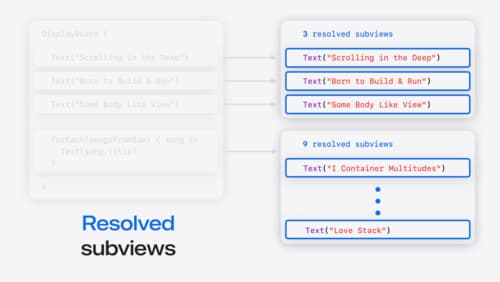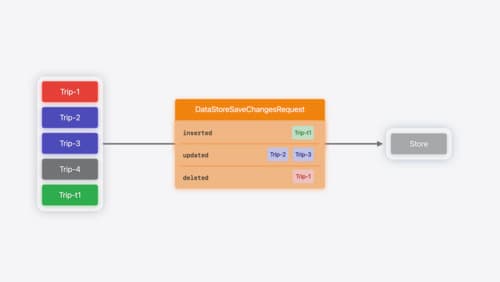what is the best way to implement a collection view datasoruce ?
Asked on 2025-02-12
1 search
To implement a collection view data source effectively, you can leverage the new features and best practices introduced in the WWDC sessions. While the context provided does not directly address collection view data sources, it does highlight some relevant concepts and tools that can be useful in managing data for views, such as SwiftData and custom data stores.
-
SwiftData and Custom Data Stores: SwiftData provides a robust framework for managing data persistence and can be used to back your collection view data source. You can create custom data stores that allow you to use different storage backends, such as JSON files or remote web services, while still using SwiftData's APIs. This flexibility can be particularly useful if you need to manage complex data models or require custom persistence logic.
-
Data Source Snapshots: The concept of data source snapshots, as discussed in the session "Create a custom data store with SwiftData," can be applied to collection views. Snapshots provide a sendable, codable representation of your model's current state, which can be used to efficiently update your collection view when the underlying data changes.
-
SwiftUI and List Initializers: If you are using SwiftUI, the session "SwiftUI essentials" discusses using lists and the
ForEachview to generate views for each element in a collection. This approach can be adapted for use in a collection view, allowing you to create dynamic and responsive interfaces.
For more detailed guidance on implementing a collection view data source, you might want to explore the session on "What’s new in UIKit," which includes updates to collection and table view APIs that make it easier to update your cells and manage list environments.
If you are interested in learning more about these topics, you can check out the following sessions:
- Create a custom data store with SwiftData (Meet DataStore)
- SwiftUI essentials (Fundamentals of views)
- What’s new in UIKit (List improvements)

Demystify SwiftUI containers
Learn about the capabilities of SwiftUI container views and build a mental model for how subviews are managed by their containers. Leverage new APIs to build your own custom containers, create modifiers to customize container content, and give your containers that extra polish that helps your apps stand out.

Create a custom data store with SwiftData
Combine the power of SwiftData’s expressive, declarative modeling API with your own persistence backend. Learn how to build a custom data store and explore how to progressively add persistence features in your app. To get the most out of this session, watch “Meet SwiftData” and “Model your schema with SwiftData” from WWDC23.

Platforms State of the Union
Discover the newest advancements on Apple platforms.
